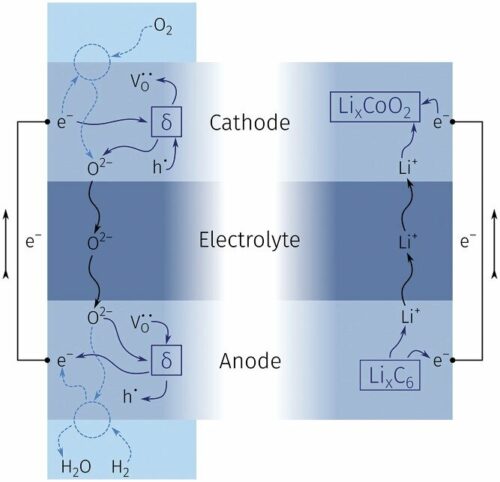Researchers have developed new ceramic based material that can be adapted as oxygen-ion batteries.

Lithium-ion batteries are ubiquitous today, but that does not mean that they are the best solution for all areas of application. Researchers are working on developing new materials suitable for replacing lithium at its own game.
TU Wien has now succeeded in developing an oxygen-ion battery that has some important advantages. Although it does not allow for quite as high energy densities as the lithium-ion battery, its storage capacity does not decrease irrevocably over time: it can be regenerated and thus may enable an extremely long service life. Oxygen-ion batteries can be produced without rare elements and are made of incombustible materials.
Researchers used ceramic materials that can absorb and release doubly negatively charged oxygen ions. When an electric voltage is applied, the oxygen ions migrate from one ceramic material to another, after which they can be made to migrate back again, thus generating electric current.
The basic principle is similar to lithium ion batteries. But this new material has its own advantages. Ceramics are not flammable—so fire accidents, which occur time and again with lithium-ion batteries, are practically ruled out. In addition, there is no need for rare elements, which are expensive or can only be extracted in an environmentally harmful way.
But perhaps the most important advantage of the new battery technology is its potential longevity. In most batteries, charge carriers can no longer move over time. However, the oxygen ion batteries can be regenerated without any problems: If oxygen is lost due to side reactions, then the loss can simply be compensated for by oxygen from the ambient air.
The new battery concept is not intended for smartphones or electric cars, because the oxygen-ion battery only achieves about a third of the energy density that one is used to from lithium-ion batteries and runs at temperatures between 200 and 400 °C. The technology is, however, extremely interesting for storing energy.
Reference : Alexander Schmid et al, Rechargeable Oxide Ion Batteries Based on Mixed Conducting Oxide Electrodes, Advanced Energy Materials (2023). DOI: 10.1002/aenm.202203789






